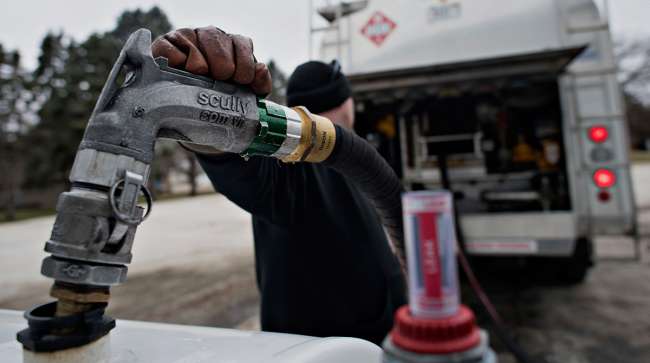Staff Reporter
Several States Phase In Fuel-Tax Increases

Fuel is now more expensive in seven states: Oklahoma, South Carolina, Indiana, Maryland, Tennessee, Vermont and Iowa.
As of July 1, these states have joined others that have increased taxes to channel more revenue to maintaining transportation and funding construction projects.
Oklahoma raised its tax to 19 cents for gas and diesel, marking the first time the state has increased the fuel tax in 31 years. Several increases — including those in South Carolina, Indiana and Tennessee — are the result of multistep programs that raise the fuel tax over time.
Indiana DOT spokesman Scott Manning explained that Indiana’s increase of 1 cent on diesel is part of long-term road funding legislation passed by the state General Assembly last year. The legislation called for the fuel tax to be indexed over the next seven years, with the annual increase to be no more than 1 cent per year.
“The additional revenue generated by the fuel tax is dedicated to state and local road and bridge construction,” Manning said. “Indiana has developed a 20-year road plan with funding in place for all existing assets and to finish major projects underway.”
Iowa’s .2-cent tax increase pertains to gasoline that is not blended with ethanol, which is common in Iowa. State officials have assessed rates for this type of fuel every year since 2002. Stuart Anderson, director of Iowa DOT’s Planning, Programming and Modal Division, explained that between 65% and 70% of the gasoline purchased in the state is of the ethanol-blended variety.
Beginning July 1, the tax rate on gasoline that is not blended with ethanol is 30.7 cents per gallon, while the tax rate on ethanol-blended gasoline is 29 cents per gallon.
Anderson said July 1 is a popular start date because it coincides with the start of most states’ fiscal years.
According to a report from the Institute on Taxation and Economic Policy, the seven states that increased fuel taxes were accompanied by one state who lowered the tax. Nebraska cut its gas and diesel tax by .4 cents to 28 cents per gallon.
Daniel Murray, vice president of the American Transportation Research Institute, said statewide fuel-tax increases are an efficient way to raise revenue in the absence of federal action, such as an increase to the national fuel tax of 24.4 cents per gallon for diesel and 18.4 cents for gasoline.
President Donald Trump’s infrastructure funding plan, unveiled Feb. 12 and not yet legislation, calls for significant non-federal funds to reach the proposed $1.5 trillion over 10 years. Just $200 billion would come from federal funds.
“Many, many states have raised their fuel tax beyond just the seven that went into effect” July 1, Murray said. “It’s the right thing to do, particularly when we can’t generate a federal infrastructure plan out of Washington, D.C. I cheer on the states for doing their part.”
California, Montana, Oregon, West Virginia, Utah, New Jersey, Georgia, Idaho, Michigan, South Dakota and Kentucky are among the states that have previously increased fuel taxes.
Murray said states bolstering their “spending coffers” will be well-suited to participate in federal grant programs, many of which require matching funds.
ATRI’s Framework for Infrastructure Funding report, released Nov. 8, determined that a fuel-tax increase is the best option for achieving infrastructure funding. The research found that other methods of generating revenue, such as miles-based user fee and increased tolling systems, will fall short of the funds needed to invest in transportation.
“In general, our highway funding analysis has said, both at the federal and state level, use the fuel tax as your most efficient mechanism,” Murray said. “It’s basically a win-win for everybody.”




